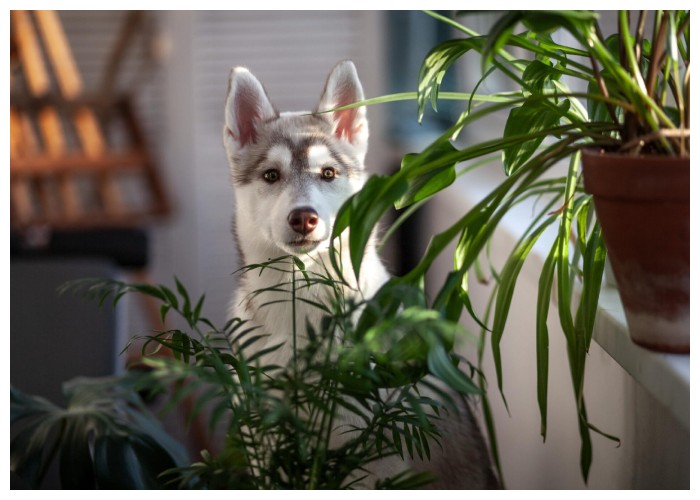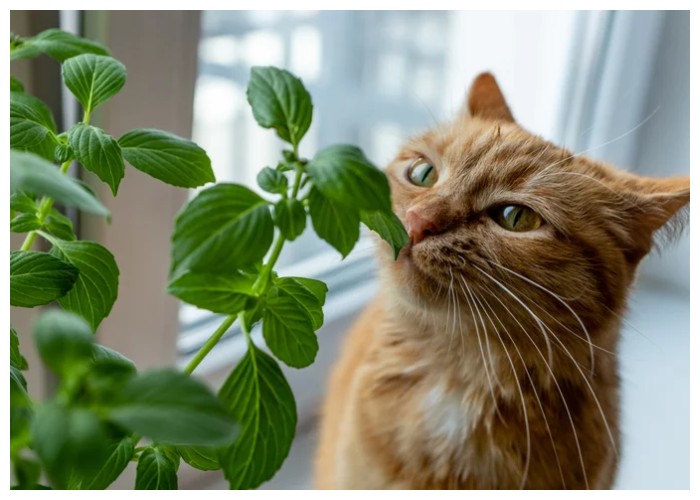The allure of vibrant houseplants is undeniable in the quest to transform our living spaces into lush indoor oases. From the architectural elegance of towering ferns to the subtle charm of succulent arrangements, the addition of greenery can breathe life into the most mundane of interiors. Yet, beneath the serene facade of your verdant paradise, hidden dangers may lurk, posing unsuspected threats to the most curious and cherished members of our households: our pets.
For those of us blessed with the companionship of cats and dogs, the responsibility of creating a pet-safe environment is paramount. This guide illuminates the veiled hazards of five common houseplants, offering crucial insights for pet owners to harmonize their green thumb aspirations with the well-being of their furry friends.
-
Beware the Beauty of Alocasia
The Alocasia, with its dramatic foliage and striking vein patterns, commands attention. Yet, this botanical beauty harbors a perilous secret. Rich in calcium oxalate crystals, the Alocasia stands as a formidable adversary to any pet daring enough to nibble on its leaves. Symptoms of ingestion include severe oral irritation, drooling, difficulty swallowing, and swelling of the mouth and tongue – a distress signal necessitating urgent veterinary care. Pet owners enchanted by the Alocasia’s allure must prioritize its placement out of paws’ reach, ensuring that admiration comes from a safe distance.
-
Aloe: A Double-Edged Sword
A staple in homes for its soothing properties on human skin and myriad health benefits, Aloe Vera simultaneously presents a paradox for pet owners. Despite its therapeutic prowess for us, Aloe harbors saponins and anthraquinones, compounds that spell trouble for our four-legged counterparts. Ingestion may lead to severe gastrointestinal distress, including vomiting, diarrhea, lethargy, and even urine discoloration. Awareness and preventive measures are key, underscoring the need for strategic plant placement beyond the curious reach of pets.

-
The Deceptive Charm of Amaryllis
The Amaryllis, with its flamboyant, trumpet-shaped blossoms, is a visual feast, especially during the holiday season. However, lurking beneath its captivating exterior are toxins such as lycorine, capable of inducing a spectrum of gastrointestinal and systemic symptoms in pets. From drooling to abdominal pain and, in severe cases, tremors and respiratory distress, the consequences of Amaryllis ingestion are dire. Vigilance in positioning and prompt recognition of symptoms are essential for pet owners charmed by its beauty.
-
Anthurium: Danger Disguised as Desire
The Anthurium, with its glossy, heart-shaped leaves and vivid spathes, is a symbol of exotic beauty. Yet, this desirable houseplant conceals a hazard in the form of calcium oxalate crystals, posing a significant risk to pets. Exposure can lead to intense mouth pain, and more difficulties, signs that demand immediate action. The striking visual appeal of Anthuriums makes them coveted additions to home decor, yet their potential for harm cannot be ignored. Pet owners must exercise caution, ensuring these plants are kept in locations where pets cannot access them, safeguarding their furry family members from unintended harm.
-
Asparagus Fern: A Faux Friend in the Fern Family
The Asparagus Fern, often admired for its delicate, feathery foliage, masquerades as a benign addition to your plant collection. However, this imposter, not a true fern, carries risks for both cats and dogs. Its leaves can cause allergic dermatitis in pets, leading to skin irritation and rashes. More alarmingly, if its berries are ingested, they can cause severe gastrointestinal upset, manifesting as vomiting, diarrhea, and abdominal pain. Pet owners attracted to the Asparagus Fern’s aesthetic must prioritize the safety of their pets, placing these plants well out of reach to avoid these distressing outcomes.

Creating a pet-safe indoor garden requires a careful balance between our love for plants and the safety of our animal companions. The enchantment of Alocasia, Aloe, Amaryllis, Anthurium, and Asparagus Fern can still be enjoyed, provided pet owners are armed with knowledge and take proactive steps to prevent exposure. By educating ourselves about the potential dangers certain plants pose and taking measures to mitigate these risks, we can cultivate a harmonious living space that nourishes the souls of both plant enthusiasts and their beloved pets alike.
In navigating the intersection of pet ownership and plant care, the key is awareness and prevention. Consider non-toxic alternatives that can equally enhance your home’s ambiance without posing a risk to your pets. Always consult with a veterinarian when introducing new plants into your home to ensure they are safe for all members of your household.
Embrace the joy of indoor gardening while considering your pets’ well-being. By doing so, you create not only a visually appealing space but also a safe haven for every member of your family, ensuring that the tranquility of your green retreat is shared and enjoyed by all, free from hidden dangers. Let this guide be the first step towards fostering an environment where the love for plants and pets can coexist beautifully and safely.